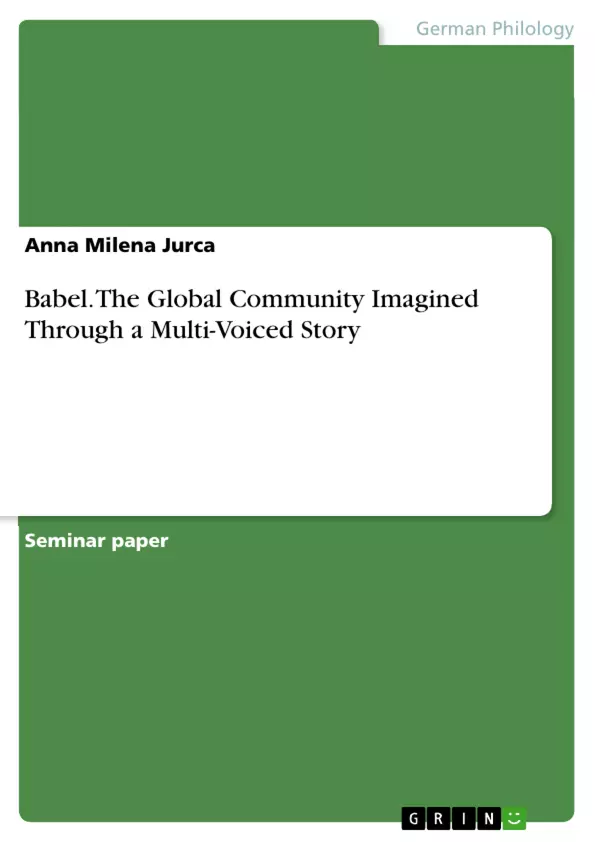While the structure of narration used in the 19th and early 20th century to imagine a national community and to create an identity was one characterized by linearity, chronology, and homogeneity, current mass culture is engaged in the search for other ways to shape the idea of a now global community. This paper analyzes the movie Babel that exemplifies the way cinema art can deconstruct the traditional linearity in time and place of its narration and replace it with a fragmented and network-like set of stories.
This shift is most visible and developed in the American cinema (Pulp Fiction, Go, 21 Gram, City of God, Amores Perros, Crash, Sin City, Magnolia, Memento, Donnie Darko), but also increasingly appears in European productions (One Day in Europe). Considering the worldwide effects of globalization and mass culture that attempts to deal with global impacts on society, politics, and cultures, it is more important to acknowledge that this shift is occurring in Western culture than stressing whether a particular movie was produced in Europe or the Americas. I argue that this emergence of fragmented network stories can be seen as evidence of mainstream culture concerned with and carrying on the effects of globalization on human relations.
After exposing how the traditional linear cinematic narration is replaced by a network of fragments of stories and time pieces, I will argue that the connection of mainstream culture with this new type of narrativity is a representation of the economic and political struggles at a global scale. Furthermore, I will display how culture, previously attempted to create an image of the nation by narrating linear stories, now creates the master-narration of a global community and how this can be used as a tool to critique world politics.
Inhaltsverzeichnis (Table of Contents)
- I. Introduction
- II. Cinema Narration and the Image of the Global Community
- III. Conclusion
Zielsetzung und Themenschwerpunkte (Objectives and Key Themes)
This paper analyzes the film Babel, examining how its fragmented narrative structure challenges traditional cinematic storytelling techniques and reflects the complexities of a globalized world. The paper aims to demonstrate how this shift in narrative form represents the impact of globalization on human relations and culture.
- The transition from linear to fragmented storytelling in cinema.
- The connection between narrative structure and the perception of the world.
- The role of cinema in constructing images of national and global communities.
- The impact of globalization on culture and human relations.
- The use of cinematic narration as a tool to critique global politics.
Zusammenfassung der Kapitel (Chapter Summaries)
The introduction establishes the paper's central argument: the fragmented narrative structure of Babel reflects the complex realities of a globalized world. It contrasts traditional linear storytelling with the contemporary trend towards multi-voiced, fragmented narratives.
The second chapter delves into the relationship between cinematic narration and the image of the global community. It analyzes the specific structure of Babel, contrasting its fragmented narrative with the typical characteristics of mainstream cinema. The chapter explores how this structural shift mirrors the growing interconnectedness and complexity of the world.
Schlüsselwörter (Keywords)
This paper focuses on key concepts such as cinematic narration, globalization, fragmented storytelling, global community, mass culture, and the interplay between film and social, political, and cultural contexts.
- Citar trabajo
- Anna Milena Jurca (Autor), 2007, Babel. The Global Community Imagined Through a Multi-Voiced Story, Múnich, GRIN Verlag, https://www.grin.com/document/127387



